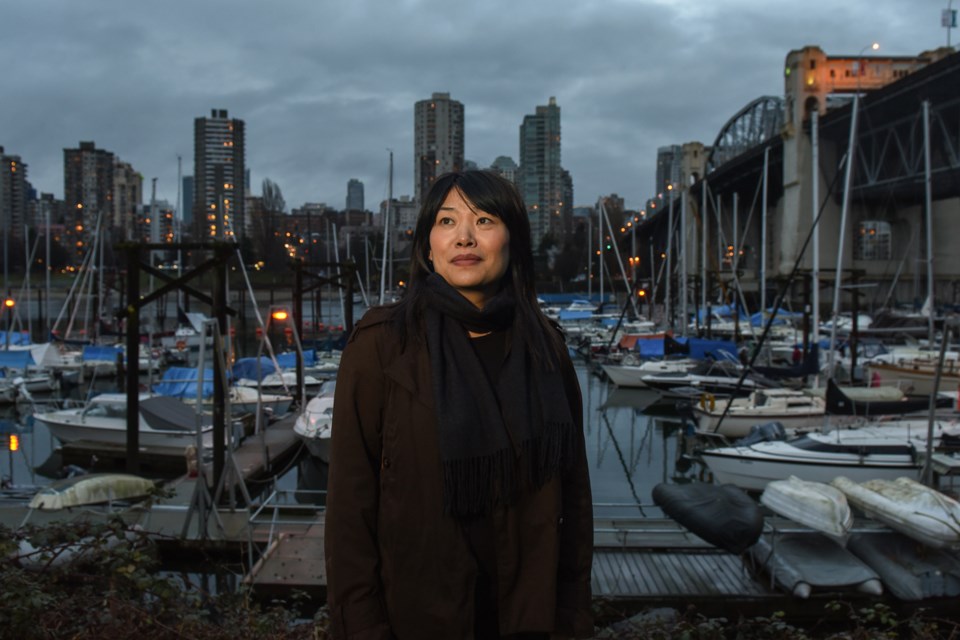Cindy Mochizuki’s latest project is an experience through the senses, much like a waking dream. The taste of Japanese caramel lingered on the tongue as those who signed up for Mochizuki’s storytelling project, Paper, stepped aboard a boat Saturday afternoon wearing the provided headphones.
The waves swayed the False Creek Ferry (which kindly lent two sailings a day to the audio project Saturday and Sunday), and rain streaked its windows as the pre-recorded story breathed life into K and her small family restaurant located on a mysterious island along the shores of 1960s post-war Japan. One evening, the story went, a man appeared before closing and a strange sequence of events allowed K a glimpse into a portal created by a tiny hole in the restaurant’s paper menu. She saw a forest.
Fantasy and fact swirl about one another in this story; the forest Mochizuki speaks of was a large piece of land on Pender Island purchased by a migrant from Yonago, Tottori, Japan during the 1900s. The island the restaurant was on was inspired by a boat tour through the canals of Yonago that Mochizuki took during an artist residency program in August 2014 where the idea for Paper formed.
As the tour boat passed a bird sanctuary and its black swans, the guide pointed where a café used to stand, where a beautiful woman made noodles, he said. He had said it in such an off-hand manner there was much cause for doubt.
It turned out to be fact, even though Mochizuki’s story had already been dreamed up. At Paper’s Japanese opening later that year in Yonago, the granddaughter of the woman who owned the café in the 1930s was in attendance. The café, she said, was called Tatsumi-Tei.
The storytelling ended as the boat docked at Heritage Harbour behind the Maritime Museum 20 minutes later but the experience did not. The group walked along a wet pathway to the back of the Burrard Marina Field House where two women served tea and traditional chagayu, a porridge with salmon and rice, which is often eaten by Japanese Canadian fishermen during long trips at sea. As with the caramel, Mochizuki made all the food in her own kitchen not only in homage to the restaurant in her story, but also in acknowledgment of the chance encounter between the story’s two characters across the Pacific.
The group was seated at two tables in the room surrounded by lockers and, following introductions, people shared their thoughts that included: “It was so thoughtful and poetic,” “I lost track of how much time that even took” and “You are on the boat, you can’t figure out where you are, the West Coast or another world?”
Overlaying a fantastical world over familiar geography like layering transparencies onto an overhead projector made Paper a personal experience, perhaps one that will one day be considered the precursor to virtual reality.
“I’m interested in forgotten stories or stories that are invisible or stories we can’t see in everyday life,” Mochizuki said as the afternoon wore away. “It’s important to me that the audience experiences the trip as a bit of a journey that lifts you off the ground so you’re not walking.”
While Mochizuki is a Vancouver-based multidisciplinary artist who is more interested in working outside the walls of the gallery (which is why the event was presented by the Contemporary Art Gallery, which includes offsite projects in its programming), the next opportunity to experience Paper will be indoors.
The audio project is a trilogy with Paper, which draws on B.C.’s early lumber industry, as the second chapter. The first chapter, Rock, and the last chapter, Scissor, will connect stories of coal and steel between the shores of Japan and the islands of British Columbia.
Rock, Paper, Scissor will be launched at the Nikkei National Museum and Cultural Centre in 2017.
@rebeccablissett



